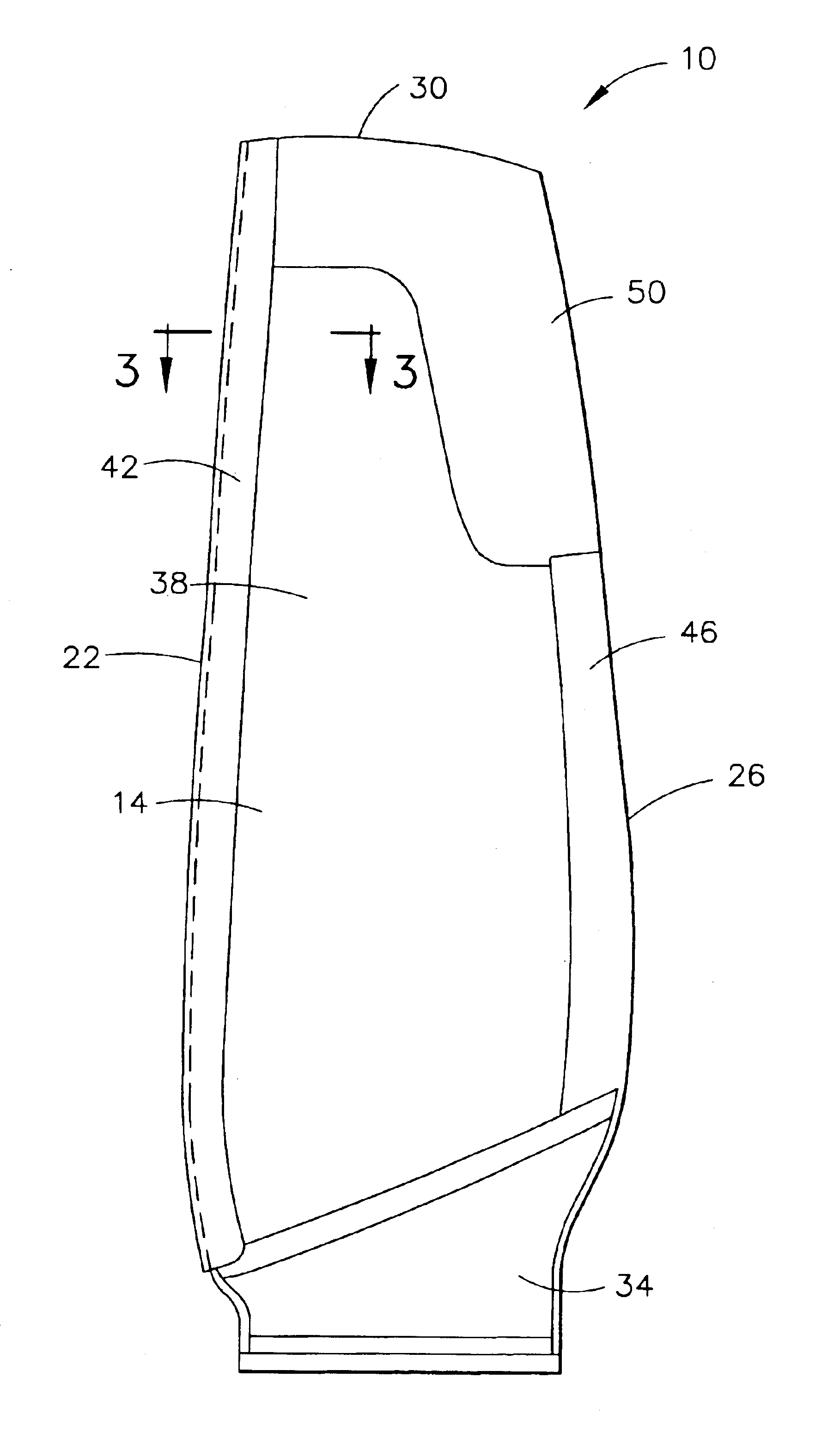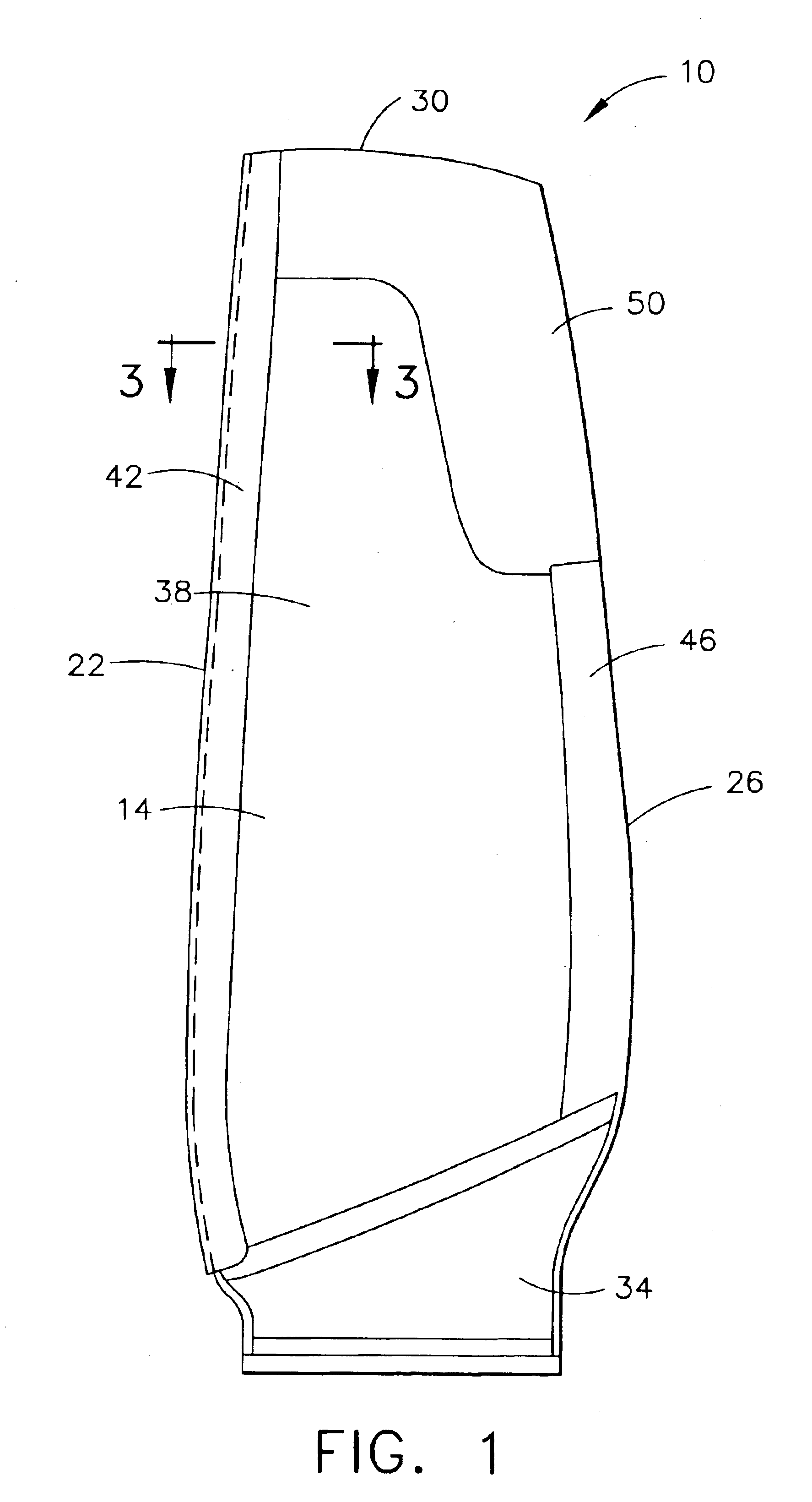Method for removing metal cladding from airfoil substrate
a metal cladding and airfoil technology, applied in the direction of liquid fuel engines, efficient propulsion technologies, machines/engines, etc., can solve the problems of reducing the performance of compressors, reducing the service life of compressors, and reducing the malleability of metal cladding, so as to reduce or eliminate damage
- Summary
- Abstract
- Description
- Claims
- Application Information
AI Technical Summary
Benefits of technology
Problems solved by technology
Method used
Image
Examples
Embodiment Construction
Referring to the drawings, FIGS. 1 and 2 show different sides of a representative gas turbine engine fan blade for which the method of the present invention can be useful that is indicated generally as 10. While the description of the method of the present invention is with reference to a turbine fan blade, it should be understood that this method is applicable to other airfoils, including vanes, propellers, rotor blades (e.g., for helicopters), as well as other types of turbine blades that have metal cladding that is adhered to a substrate. FIG. 1 shows the convex curved surface of blade 10 (also referred to as the “suction” side of the blade) indicated generally as 14, while FIG. 2 shows the concave curved surface of blade 10 (also referred to as the “pressure” side of the blade) indicated generally as 18. Blade 10 also has a leading edge indicated as 22, a trailing edge indicated as 26, a tip edge indicated as 30 and a blade root indicated as 34.
The substrate portion of blade 10 ...
PUM
| Property | Measurement | Unit |
|---|---|---|
| thickness | aaaaa | aaaaa |
| thickness | aaaaa | aaaaa |
| thickness | aaaaa | aaaaa |
Abstract
Description
Claims
Application Information
 Login to View More
Login to View More - R&D
- Intellectual Property
- Life Sciences
- Materials
- Tech Scout
- Unparalleled Data Quality
- Higher Quality Content
- 60% Fewer Hallucinations
Browse by: Latest US Patents, China's latest patents, Technical Efficacy Thesaurus, Application Domain, Technology Topic, Popular Technical Reports.
© 2025 PatSnap. All rights reserved.Legal|Privacy policy|Modern Slavery Act Transparency Statement|Sitemap|About US| Contact US: help@patsnap.com



